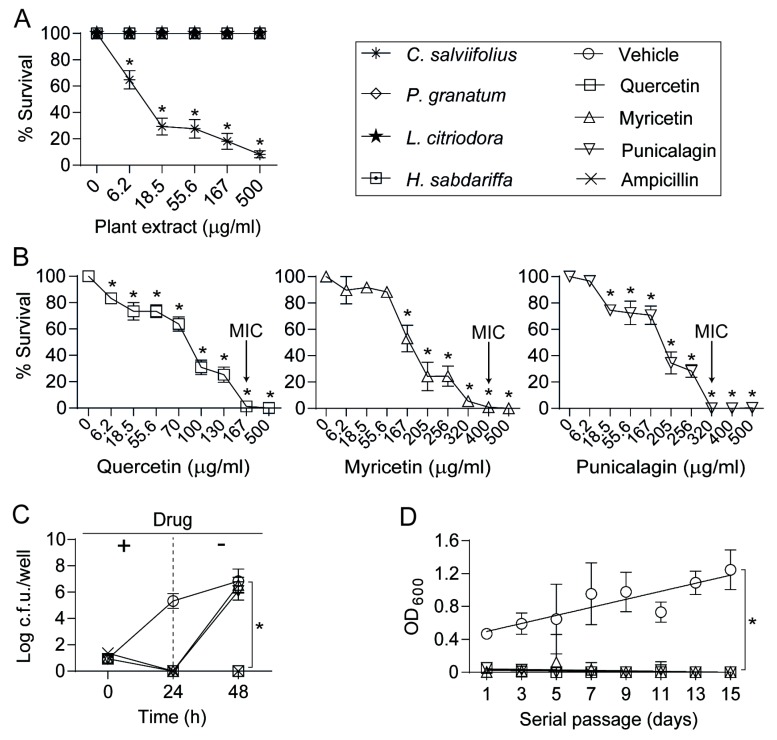Figure 1.
Antimicrobial effect of plant extracts and pure polyphenols on H. influenzae. (A) NTHi375 strain is susceptible to Cistus salviifolius extract in a dose-dependent manner (* p < 0.001). Results are shown as the survival percentage (mean ± SEM); (B) Polyphenols present in the C. salviifolius extract, quercetin (* p < 0.001), myricetin (* p < 0.0001) and punicalagin (* p < 0.0001), reduced NTHi375 survival in a dose-dependent manner. Survival percentage (mean ± SEM) is shown; (C) Quercetin has a bactericidal effect, and myricetin and punicalagin have a bacteriostatic effect on NTHi375, when comparing bacterial counts (log c.f.u./well, mean ± SD) after incubation with- and without polyphenol inhibitory concentrations. At 24 h, only bacteria incubated with vehicle solution rendered counts, when compared with ampicillin (Amp)-treated cultures (* p < 0.0001). After polyphenol replacement by sBHI, 48 h bacterial cultures previously incubated with punicalagin or myricetin rendered significant counts, when compared with quercetin and Amp treated cultures (* p < 0.0001); (D) NTHi375 did not grow after 15 daily serial passages in the presence of polyphenol (quercetin, myricetin or punicalagin) subinhibitory concentrations. Data are shown as OD600 (mean ± SD) in every passage (* p < 0.0005). Statistical comparisons of the means were performed with two-way ANOVA (A and C) or one-way ANOVA (B and D), and Dunnett’s multiple comparisons test.

